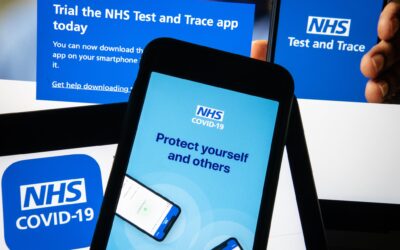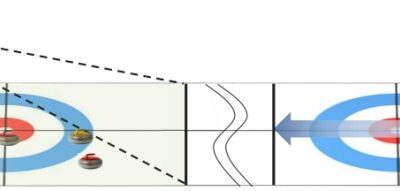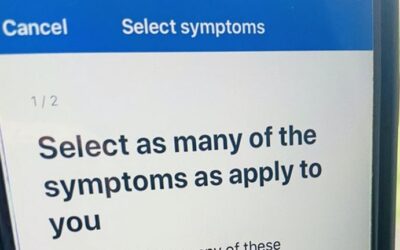Our Blog
Ut porttitor imperdiet hendrerit. Suspendisse pulvinar lacus nec sollicitudin finibus ligula quam.
NHS Covid-19 app: What does it actually do, and how does it do it? Everything you need to know
The NHS Covid-19 app has finally arrived, and with it the hope that it could help stop the spread of coronavirus.The app intends to alert people when they might have been in contact with someone carrying the disease, and will encourage them to isolate and stop the spread when they are.The rollout of the app has been marred by questions, controversy and U-turns that have forced a change of strategy. And while the new app is not without its problems, it has dealt with many of the issues that first greeted the app when it arrived.Wasn’t this supposed to be out ages ago?Yes. The NHS Covid-19 app has had a difficult development process and rollout, beset by both technical and ideological problems.Initially, its developers had hoped for a centralised design, in which data would be sent to an official server that could then be used to conduct research as well as track exposures. But privacy and technical issues with that design led the government to abandon it, and instead use the decentralised approach that the app released today has, storing the important information on individual phones.Read moreThe government also changed its messaging on the app, as that process continued. It went from being a central plank of its test and trace plans to an extra add-on, as it became clear the app would be later and less efficacious than initially hoped.It has now finally arrived, in a somewhat later and different fashion than initially planned, but with much of the same functionality as hoped.How do I use it?The app is fairly simple: you download it through either the Apple or Google app store, open it up, give it the necessary information and permissions, and then carry on as normal. For the most part, the app will do its work in the background.If the government changes the risk status of your area or if you are found to have been exposed to someone who is positive, you’ll receive a notification.You might also sometimes be asked to scan QR codes when you go into shops. That’s done from the menu screen.How does it actually work?The app is both broadcasting its own bluetooth signal as well as listening out for those from other phones. If an person then indicates through the app that they have tested positive, their phone will let the owners of other devices that it has been in contact with know, so that they can take precautions.The precautions themselves will also be pushed through the app. It will give advice about self-isolating, and even provide a timer that will count down until it is safe to go out again.The app also makes heavy use of QR codes that can be placed in shops, restaurants and other public places and scanned by people who visit them. Again, if that place becomes a known hotspot of coronavirus, the phones that have scanned those QR codes can alert their owners that they might need to take precautions.Will this work everywhere?For the moment, our app is limited to England and Wales. It isn’t able to track exposures from people in other countries, and other countries’ apps aren’t able to track people using this one.That includes other nations within the UK: the NHS Covid-19 app doesn’t co-operate with the Scottish or Northern Irish one. Those two do, however, work together, and each of them works with the Irish one.That’s because the technology underpinning it – made by Apple and Google – does offer the option to make these apps interoperable, even though it hasn’t been made use of by the developers of the England and Wales version. Its developers have committed to do so, and it should be coming in the future. Will it work on every phone?The app requires a set of both software and hardware technologies that are not found on every phone. As such, there are a considerable number of older devices that this won’t work on.Phones need to have recent versions of iOS (13.5 or later) or Android (6, or “Marshmallow”, or later). They also need to have the Bluetooth Low Energy technology that allows for the bluetooth to work without taking up too much battery.As you might expect, this has caused to some concern that the app is unhelpfully exclusive, and will leave out older and poorer people who are less likely to have newer devices.Can people not put fake results into the app?No. People can only mark themselves as positive if they have had it verified through a test – if they are, they will be given a code that is required to mark themselves as such, to avoid malicious positives that could quickly force people to stay at home with no actual need to do so.That is intended to keep the system secured, and responds to concerns from experts that the app could be used for sophisticated attacks. But it does also mean that its success relies on the government’s testing regime, which has been the subject of sustained criticism.Is the app finished?No – more features are coming. As well as interoperability with other countries’ apps, developers have suggested that it could in the future include a “personal risk score”, which will watch out for how many bluetooth connections are discovered and warn people who are coming into contact with too many others that they might want to change their behaviour.How does it compare to other countries’ apps?It is mostly the same. It relies on Apple and Google technology that has become the standard for creating such apps, and so most countries’ services have the same foundations and functions.This wasn’t always going to be the case. The government and the app’s creators received sustained criticism for going their own way with plans such as a centralised app, but have over time relented and taken the same approach of most other governments.That is also what should make it relatively easy to tie together with other countries in the future, too, with the hope that people can use it as they move around internationally.
Scientists solve mystery of Jupiter's polygon storms
Scientists have solved the mystery of Jupiter’s polygon storms, which were first spotted by NASA’s Juno space probe in 2019.
At the gas giant’s south pole, hidden from view from Earth, is a herd of storms arranged in a perfect geometric pattern.
This is unlike anything else humanity has observed in the universe. The most comparable gas giant we know of, Saturn, has single massive storms at each of its poles – not a collection of them arranged in such a mathematical formation.
Image: The gas giant held a secret geometric pattern at its south pole
But a research team at the California Institute of Technology, working in the Andy Ingersoll laboratory, has now figured out why the storms arrange themselves in this pattern.
The answer – published in the Proceedings of the National Academy of Sciences – was inspired by a mathematical proof developed long before the space age – and almost 150 years ago by the British mathematical physicist and engineer Lord Kelvin.
Advertisement
Working alongside American physicist Alfred Mayer, he observed in 1878 that when circular magnets were floated in a pool of water, they would spontaneously arrange themselves into geometric shapes.
“Back in the 19th century, people were thinking about how spinning pieces of fluid would arrange themselves into polygons,” Professor Ingersoll said.
More from Science & Tech
“Although there were lots of laboratory studies of these fluid polygons, no one had thought of applying that to a planetary surface.”
This is what the scientists at Ingersoll’s laboratory did, building a computer model of what might be happening on Jupiter and running the simulations to see if their model held any value.
The storms are very similar to those on Earth, which form close to the equator and drift towards the poles – but on Earth the hurricanes and typhoons tend to dissipate when they get too far away from the equator.
However, because Jupiter’s storms do not experience any friction from the land or the oceans, they keep on going until they reach the poles.
Image: Jupiter’s south pole was hidden from eyes on Earth
In the early trial runs of the simulations, the team found that the cyclones tended “to merge at the pole due to the rotation of the planet” said Dr Cheng Li, lead author of the study and a researcher at UC Berkeley.
But they found that the stable geometric arrangement could occur when the storms were each surrounded by a ring of winds turning in the opposite direction to the storms themselves, called an anticyclonic ring.
The made the storms repel each other rather than merge.
This phenomenon could help researchers understand how Earth’s weather behaves – but also solves a particularly fascinating and modern mystery.
“Other planets provide a much wider range of behaviours than what you see on Earth, so you study the weather on other planets in order to stress-test your theories,” Professor Ingersoll said.
Google Maps now colour-codes your city so you can avoid high coronavirus areas
Google has added a new “COVID-19 info” filter to its Maps service that colour-codes areas to show the spread of the virus.Users get a seven-day average of the number of new cases per 100,000 people in the area that they are looking at.They also get a label that shows whether the number of cases is increasing or decreasing.Google has rolled out this update for all countries and terroritories where Google Maps is available – a total of 220 areas altogether – and can be targeted to country, state, province, and city-level.The app gathers its data from a variety of sources, including Johns Hopkins University, the New York Times, and Wikipedia. Read moreThese in turn get their information from from public health organizations including the World Health Organization, government health ministries, and local health agencies and hospitals.The update will be rolling out worldwide on both iPhones and iPads, as well as Android devices.Google has made a number of other updates to its Maps app because of the coronavirus.
Curling robot beats top-ranked human teams in major breakthrough
An AI-powered robot has beaten a team of professional curling players in a major real-world breakthrough for robotics.The Curly robot, developed by a joint German-South Korean research team, used deep reinforcement learning to learn the best way to slide stones along the ice and land on the target.In a match against top-ranked opponents, the robot won three out of the four games.“These results indicate the gap between physics-based simulators and the real world can be narrowed,” the researchers wrote in a paper.Curly makes use of two robots – a “Thrower-Curly” and a “Skip-Curly” – in order to both assess the target area and to slide the stone towards it.
Test and Trace is not going to reach everyone
The upward trend in positive cases continues in the latest statistics for Test and Trace, which show that 19,278 new people in England tested positive between 10 September and 16 September.
In the previous week, that number was 18,371, so this is a rise of 3% – which, inevitably, begs all sorts of questions.
Does a 3% rise mean the outbreak is flattening off? Does the fact that it comes after last week’s big jump of 167% show that the outbreak is still heading in the wrong direction?
Coronavirus live – latest UK news updates
Starmer: ‘Testing is near collapse’
In truth, it’s hard to be sure, because the recent struggles of the testing system mean that this already noisy data is now positively cacophonous.
Advertisement
Looking at the overall trend, alongside other data, it’s clear that cases are rising: up 180% since the end of August. How fast and how far remains to be seen.
Of course, we are testing far more, which increases the number of cases, but you can account for that by seeing how many people test positive per test conducted – a measure known as the positivity rate. This produces a worrying result.
More from Covid-19
In the previous week the rate was 0.97%. This week it’s 1.78%. That’s a jump of 80% in a week.
‘We’ll get through this winter together’
Deaths and hospitalisations haven’t spiked in the UK yet, but they are increasing, and in recent days they have risen sharply in France. It’s still possible they might stabilise in the UK, but altogether the signs aren’t encouraging.
One big caveat: any rise could be prevented by new measures like the rule of six, but their impact won’t be felt in these numbers for some time. We’re looking back here, not forward.
Yet when it comes to measures to protect against the virus, these statistics also tell a gloomy tale. Speed is essential in this crisis, but only 28.2% of in-person test results were received within 24 hours compared to 33.3% in the previous week.
:: Subscribe to the Daily podcast on Apple Podcasts, Google Podcasts, Spotify, Spreaker
What’s more, it’s becoming increasingly clear that Test and Trace in England is not going to be able to reach every contact.
This week’s figures show it successfully reached 77.7% of people who tested positive – or, if you prefer, missed 22.3%.
Dig a bit further into the data and you see that, of the community contacts they handed over, only 64.3% were reached.
Download NHS contact tracing app to ‘make country a safer place’
As the outbreak spreads into the general population, missing three in 10 contacts makes it hard to be confident about England’s ability to stop cases turning into clusters.
It’s worth stressing that in absolute terms, these numbers are nowhere near as bad as anything the UK experienced during the crisis – and there’s still so much we don’t know about how this second spike will develop.
But on the face of it these numbers provide little room for encouragement.
Download contact tracing app to 'make country a safer place', Hancock urges
Every person who downloads the NHS coronavirus contact tracing app will be helping “make the country a safer place”, the health secretary has told Sky News.
Speaking to Kay Burley, Matt Hancock said the app – which has finally been launched in England and Wales after months of delay and questions about its effectiveness – was a “helpful tool” in the fight against COVID-19.
Live updates on coronavirus from UK and around the world
Asked what percentage of the population would need to download it for it to be effective, Mr Hancock said “there isn’t a figure for that”.
“Every single person who downloads the app is helping to improve how it can keep us safe. It helps you to keep yourself and your loved ones safe,” the health secretary said.
Advertisement
“Every additional person downloading it will make the country a safer place.”
He added: “Even if only two people downloaded it and they came into close contact and one had tested positive, then it would work for the other.
More from UK
“Of course it’s true that the more people download it the more effective it will be, but this is just one part of our overall plan for tackling coronavirus.”
Scotland and Northern Ireland have already launched their own contact tracing apps.
Image: If you show symptoms, the app will message other users you have been in contact with
The NHS app for England and Wales – which is available to download on iPhone and Android – was trialled first on the Isle of Wight and in the London borough of Newham, and was used to send alerts to users after someone had tested positive.
It uses an Apple and Google-developed system, using Bluetooth to keep an anonymous log of people a user has been close to.
It does this by exchanging randomised keys while the Bluetooth signal strength measures proximity.
If someone falls ill, they can tell the app, which will then ping their keys to a central server and in turn send them off to all app users in search of a match.
Should the system determine a person as a close contact, they will be automatically sent a notification and issued with further guidance.
Contact-Tracing apps: The problems and potential
A QR code scanning feature is available, allowing people to check in to venues they visit and easily share their contact details for human tracing efforts.
Some 160,000 businesses have already downloaded QR codes for use in their facilities.
However, as the software is voluntary, its success will depend heavily on how many people choose to download and use it.
The government had originally tried to develop its own app software before deciding in June that it needed to co-operate with companies which provide the technology powering smartphones to come up with an effective product.
A TV advertising campaign with the slogan “Protect your loved ones. Get the app” is being used to encourage people to install the software.
COVID testing programme ‘in chaos’ amid 185,000 swab backlog, leaked documents show
The UK’s major network operators, including Vodafone, Three, EE and O2, giffgaff, Tesco Mobile, Sky Mobile and Virgin Mobile have all agreed to not charge for using it.
Baroness Dido Harding, executive chair of England’s NHS Test and Trace Programme, said: “We want to make it as easy as possible for everyone to engage with England’s NHS Test and Trace service.
“The NHS COVID-19 app enables the majority of people with a smartphone to find out if they are at risk of having caught the virus and need to self isolate, order a test if they have symptoms, and access the right guidance and advice.
“The features of this app, including QR code check-in at venues, work alongside our traditional contact tracing service and will help us to reach more people quickly in their communities to prevent further spread of the virus.
“This is a welcome step in protecting those around us.”
30,000+
Avid Subscribers






